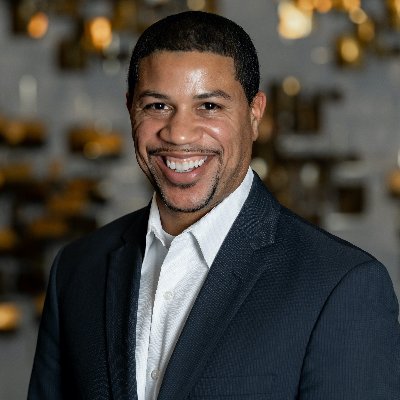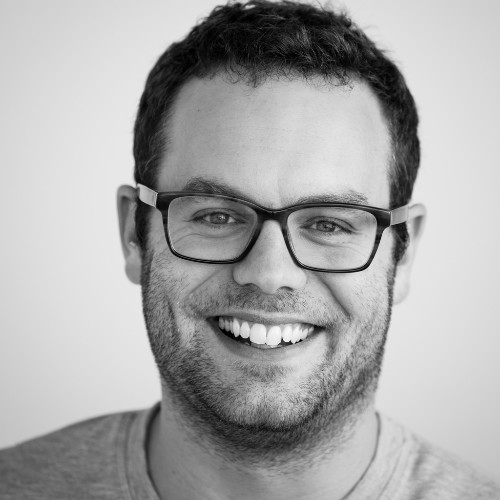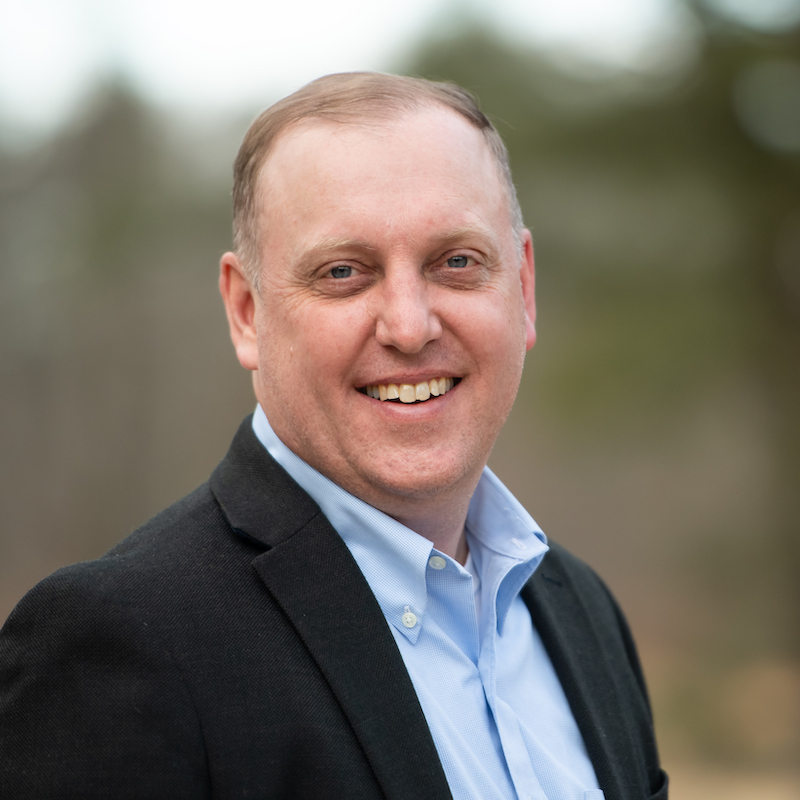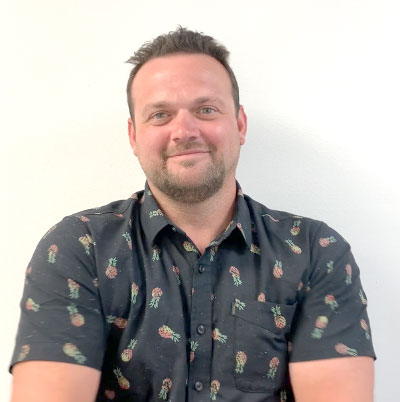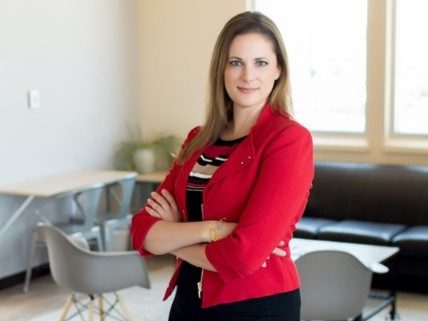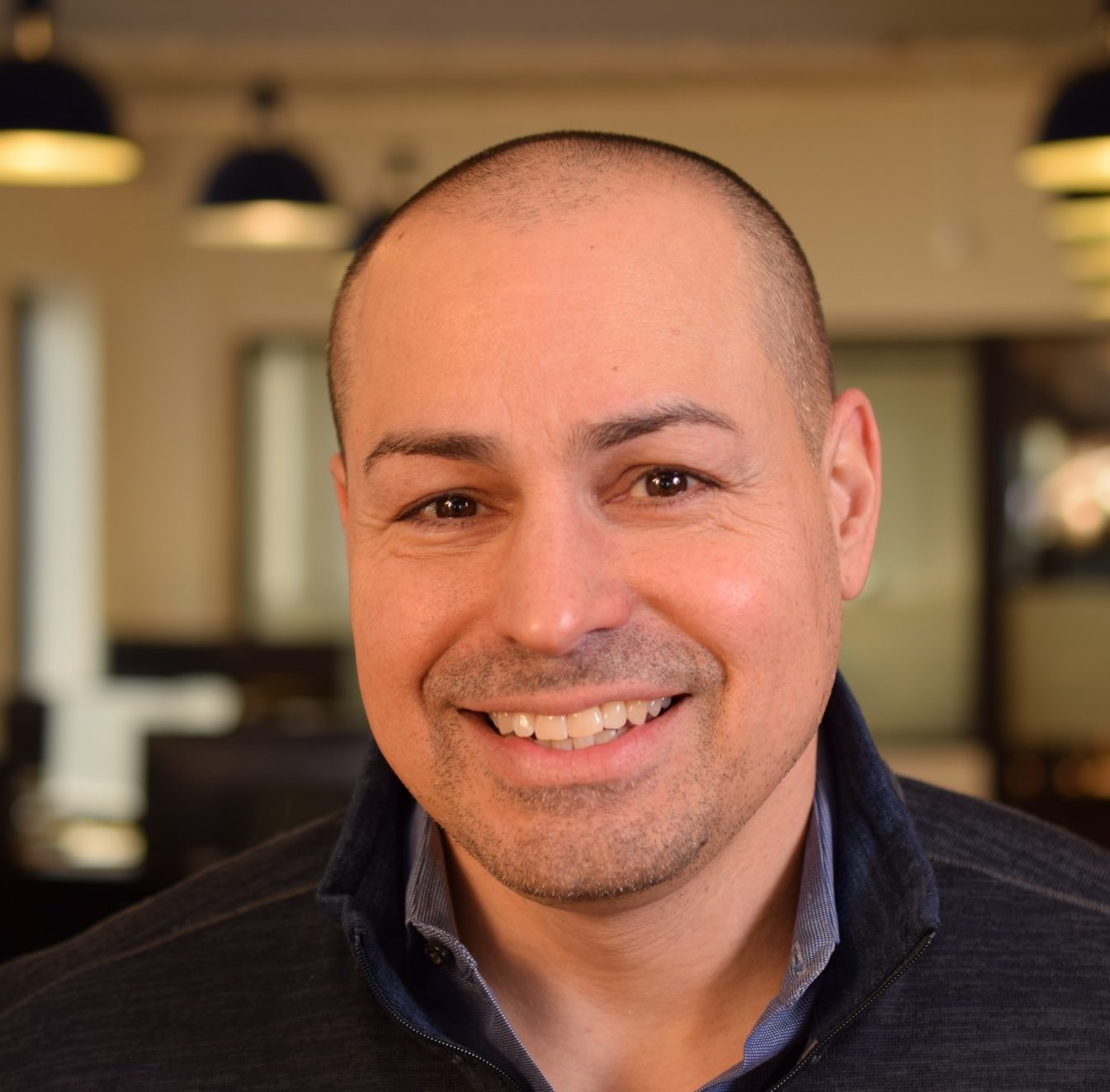Dewand Neely spent 15 years in state government and was the CIO for more than 4 years. He knows what it takes to create the technological infrastructure for a wide diversity of people and roles.
Most of the changes he implemented were a result of a focus around the citizen (read customer). Even if a process involved multiple different agencies (departments), the citizen should still feel like they had a unified and smooth experience.
He said the basic tools required to get people on the same page are a robust collaboration tool and a strong cloud platform to host your projects on.
Dewand changed roles last year and is now the COO for Eleven Fifty Academy, a nonprofit coding bootcamp.
Technology is not just about the tech
When implementing these changes, Dewand said that the most important thing is to get your goals right. He used the OKR model to set the objectives clearly and make sure that the metrics are in place. Otherwise, people are just trying to stay busy and guessing that what they are doing is right.
Then, before finding the technology, you need to find the people to run it, said Dewand. You need people who get excited about the objectives and have the experience or ability to achieve them.
Only then are you ready to find the technology to help you achieve your goals.
What is a Level 5 Digital Workplace?
To Dewand, a Level 5 digital workplace takes advantage of the tools they have. Very few organizations are able to use all the tools available for them. And most people are not trained in them.
High functioning digital workplaces practice management by objectives and find ways to let technology help them reach their goals better.
Links
Today our guest is Dewand Neely. Dewand is the COO at Eleven Fifty Academy and the former CIO of the State of Indiana. Hi, Dewand. How are you doing today?
I’m good, Neil. How are you doing today?
Excellent. It’s always great to have you on the show. I’m excited for what you’re going to share with us today. Why don’t you start off just telling us a little bit about your journey, both through government and then where you are right now.
Journey hasn’t been that long or I’d say exciting, I guess. I have been at two places for the past almost 16 years. I did some IT consulting out of college for just over a year before I found State government, and I found a passion in State government with just the mission and existence for what we do there for the citizens of Indiana. And so I spent the last 15 years there.
For technology for State government. So explain that more, where does that come from?
It was something that I think found me. I didn’t know it was there. I initially went into, I did have passion for IT and knew IT in the government space was big. And so that was a great opportunity for me that I was excited to do. What I didn’t know until a few years in was just how satisfying the mission is, the hard work that you do every day. You can see direct impacts for what you’re doing for the citizens and it’s not some board’s profit share. It’s not a stock price or a CEO’s bonus. It’s really somewhat more fulfilling. When you put in long, hard hours and you just beat down, you can always think back and say, wow, we’re doing this for a good reason. And I figured that out after a few years, and it really drove me probably that last decade or so I was there.
Was there a particular project that you look back on and you’re like, wow, that really made a big impact. I’m really proud of that.
Absolutely. I think the biggest one was just by timing and being in the right place. I happened to be at the State when Governor Mitch Daniels was elected. And we all know he’s a very smart guy, very cost conscious and really great at managing finances and operations around that. Indiana at the time was not in the black, we didn’t have a very good surplus. And so one of his goals around that was to consolidate all of the IT throughout the executive branch, where at that time, and this was just back in 2005, everyone did their own thing. There was multiple email systems. There was multiple data centers. And he said, hey, we’re one government here. Let’s centralize this. And that was the agency I joined that he created, the Office of Technology. And we spent the next four years doing just that, across every executive branch over 100 plus agencies. And that was a big deal. And I found out it was a bigger deal after being appointed to State CIO and meeting peers in other states that were still trying to figure out how you do that. Hey, Indiana’s done that.
So walk us through maybe, you’re at 2005, a lot of I think the transformations that would happen at the State level you would think would be mostly like citizen facing, helping people to make things easier. But talk about that transition between that and then also internally, employees. You want them to have a good experience. You want them to go through those things. So when you’re creating that digital workplace for State employees, what were some of the big issues you faced in building that?
Yeah, I think it comes down to, I always say breaking old habits, but I think it comes down to getting folks and agencies to break out of their silos. I think the biggest part of transformation inside of a place like State government, it’s not just the people, the agencies themselves within there sometimes acted like different people. And it’s getting them, the transformation is getting those agencies to interact more, which makes things smoother for the citizen experience, whether it’s data sharing, whether it’s collaborating on a joint project, because it’s very rarely you can get a service from the government that doesn’t involve more than one agency on the back end. In the past, unfortunately, citizens would have to figure that out on their own. Oh, by the way, to finish this last piece, you got to go over here. But I think the smart states transform that to put those pieces together for the citizens so they don’t have to know everything and take care of that work on the back end form. So I think it was more getting agencies to think outside of the box. Let’s think about state as a whole. And what’s that experience look like for the citizen as a whole? And let’s try to continue to make that better every day.
When you’re creating, basically, not really from scratch, but you have a blank slate, you’re trying to make a, what we call, digital workplace for the people that are working in the State. What do you feel like are the basic building blocks from the technology perspective that needed to be in place in order to just lay that foundation?
I think it’s a robust set of collaboration tools and communication tools from a telecom standpoint, and those things need to be ubiquitous. So they need to be able to run on your typical desktop, a laptop or mobile phone or iPad. And I think the other set of tools is a strong vision for software development, application development and the large IT projects. I think those projects have to be geared at the front to push for platforms, if possible, web applications, and not continue to build these legacy client server based full install business apps. I think states are starting to get that way you go for the platform first. And that platform is usually a cloud hosted platform. There’s so many things now that you can buy now instead of building and those things that you can buy are much more flexible, easily accessible, so that a worker can do everything they could on an iPad if they needed to, and that need the full horsepower and network connectivity of sitting in the office anymore. You pair that with great collaboration tools on how to keep in touch and share information and that’s a good start.
We look at technology, we separate out, you have your collaboration tools, you’re talking about work and you have your work management tools, we’re actually trying to get those things done. And being able to give employees both those tools, there is a good thing. Do you see a possibility? Or what’s your perspective on having those both on the same platform? Or is it more like a best of breed? Like find one great collaboration tool, find whatever work management tool you need separately, or do you like seeing it all in one?
That’s a great question because it’s something that I’m looking at in my current role right here. There are some tools that are getting closer to being able to bring that all in one to where you can have your document communication chat, email solution suite, but then also have a planner type, project management type piece that’s in there. It’d be really light. It’s not fully functional, but it’s at least a place to track schedules, to track progress and tasks. And that’s a good start for your typical employee. I think, where you need something that breaks out of that traditional collaboration suite and is more purposeful for management by objective or I like to call them OKRs, objective key results, in order to really talk about that from a organizational viewpoint at a high level and push that down. I think those key objectives need to be tracked probably in a purposeful system, usually standalone.
Yeah, absolutely. I think that’s really the third part that we see as like this goal management or team management also needs to be a part of your full digital workplace. And yet very few, I haven’t really seen any platforms out there that offer that as a integrated piece with the rest of it. So that might come soon. But let’s transition a little bit. You talked about your current role. So tell us what is Eleven Fifty Academy? What are you guys doing there? And what prompted you to make the switch?
Yeah. Gosh, all good question. So Eleven Fifty Academy is a not for profit coding academy. So our main areas that we focus on teaching is software development, web development and cybersecurity. And it’s an immersive, very fast paced program. It’s meant to get you in, literally, feed you and “beat you down” with training and information in a short period of time, 12 to 14 weeks is our normal course if you’re not doing part time. So those will get in you in quick before life gets in the way. We all know the longer training as schooling and education goes, life can just pull you so many ways. So the faster you can get in and out, you have that better chance of success. And then we really measure ourselves, if you talk about our OKRs, key results that we look at it leadership all day long is placement. Our goal really is to get someone trained but also get them the skills they need, from a professional standpoint, to go after that career in technology and get placed. We work with all of our graduates after they graduate the program to get them in a career in technology, because that’s what they came to us for. And so, when you put it like that, our president says we’re here to try to transform lives. If someone that maybe had a career that they didn’t feel was going anywhere can now get in the tech field, which not only opens up a much higher potential earnings potential, but also allows flexibility and work life balance, ability to work different places, makes them just more marketable all over. So that’s really a life transformation. And our president has a goal to change this year to change, we want to try to transform 1250 lives through our academy. And that’s a mission that speaks to me. And that’s what pulled me when I had a breakfast with them on that mission. The not for profit piece is really appealing to me because that speaks back to not having to speak to shareholders and make a bottom line that really makes us so we can focus on just doing the right thing for our students and our graduates and then the impact it can have on someone by training them for a career in tech to fill the shortage because there’s still a shortage out there as well, but to also give that person just the capacity for a better quality of life and higher earnings potential.
Do you have a different perspective now that you’ve been in tech for so long and now spinning out people in 12 to 14 weeks to try to get ready for that? What’s your perspective on what somebody needs in terms of their basic skill set to get into those roles? Typically you think, okay, if you want a career, the model is, hey, go to a four-year university and spend a long time on that. Are you more of a believer now that says, hey, let’s just get the basic skills, get in there, start doing it, and you’ll learn as you go?
Yes, somewhat. We’re definitely not competing with the traditional four-year institutions and universities. I think when you look at it, there’s always this in between spot, you got all the folks that do traditional education, and then in between spot where some folks, and I meet them every day, that just say, that didn’t feel right for me. I don’t think I can do that. For one thing, it’s long and I just didn’t think it was a good path. So I’m looking for an alternative. And I think there’s a whole population of folks that are looking for that alternative and what we do here is we wrap our program with not just the technical skills, and they’ll get the technical skills, but they do need more than that. We mold them in that professional sense, we get them connected to industry. So it’s having that ability to interact with people to work on teams, to communicate, effectively, and just show up, be on time, those kind of things. And we teach all that throughout the process as well. That way they have the technical skills to maybe get their foot in the door and to do that entry role. But I think that the other things we added on from a professional sense and the ability to grow in a team and be a good contributor professionally will help them then continue to excel in the world.
You’re sitting in the COO seat now, which I feel like is one of the most essential ones when we talk about building that digital workplace. We’re obviously still in the middle of all this pandemic. No one’s really at the office you were talking about earlier. So when it comes to actually building an operating system of the internal workings of a company, what was your primary mission when you started? You said, okay, I got to get these pieces in place. Where are you now with that? Has your understanding shifted in that? What’s it been like for you?
Yeah, I think this really speaks to the digital workplace too. Before coming over, I had just finished about a year and a half journey with my agency at the State, which was the Office of Technology, and we had about 400 employees there. I just finished an exercise where it went through a whole OKR makeover. We had traditionally, from a performance review standpoint, we had traditionally just met once a year, picked some goals for that year, and then if we were lucky, the manager did some midpoint check ins before getting to the end of the year and going through. I took my leadership through a book called “Change the Culture, Change the Game.” We read through that over a series of weeks and had some off site meetings and we put together our own internal objective and key results process. And then we rolled that out and we started managing that way. That’s a big task. It was a lot harder than I thought. I’m hoping it’s still in place. But I finally started seeing the fruits of that towards the end of that year and a half, I started seeing people say the things I wanted them to say, exhibit the behaviors I wanted them to have. And that really started to feel good. And that’s what the president and I talked about bringing to the Academy as we’re still under 50 employees right now, but our intent is to scale pretty majorly here over the next year. And so bringing in that combined set of OKRs upfront so that we can grow, learning that, obeying that all the way through. That was one main goal and then I really like, even though I’m an IT guy, I figured out I get more satisfaction from just managing people, coaching people, helping people to grow and help the teams work better. That was another piece I wanted to do from the operational side, which is why I chose an operation role and not a strict IT role. IT still falls under me here, but I do focus way more on the people side than I do IT.
I love this man. You’re our tech expert coming in as a CIO, but you’re saying to us, don’t start with the tech. You got to start with the goals, get your objectives in line, then get your people in line. And then you go find the technology that fits that. Is that right?
Yeah, well, yeah, because then you have the right mindset then of how you’re going to, what does success look like? I think too many people traditionally will try to find the tool that is going to do the job or make them successful. If I just had this tool, it’d make me successful, but then you don’t know what you’re going to really do with it. But if you know your mindset of what does success look like and how do I measure that success, then it’s easy to pick the tool that’s going to help move the needle on that stuff.
Yeah, I’d like to explore that a little bit deeper. And even some specifics you guys are looking at. As you set up your OKRs, as you get the right people in place, do you feel like there’s any specialty software or specialty tools out there that you found that like, well, actually, we don’t need this tool that everyone else is using, we need something different, and we need something that’s a little unique to what we’re in right now.
That’s been a great discovery, I guess or journey, especially me not having any experience in education space before. I got here and we are typically a school, basically a school so you have your learning management softwares. You have your, I can’t think of a technical name for it. But you have your system that manages all your student records, grade outcomes and all that. And then each group has their thing and so when I got here, it was the typical situation of where everyone is saying we need to use this. No, we need to use this. It wasn’t the right fit. And I think what we found so far is first starting off with the concept of CRM, customer relationship management, let’s manage our students from input to output better. And let’s get all the data we need around that to make the right decisions along that process, make better decisions up front and in the end. And then let’s see what pieces are missing after that. And let’s maybe tap into some pieces. And so, we’re moving towards, everyone in our CRM, and then we’re going to link to particular data sources that we find we need that are missing from that. And that seems to be, we’re in the very initial stages of that, but that seems to be slowly starting to get us all together on the same page and looking at the same things on a daily basis.
That’s great. I love that you guys are going through that and looking at what you really need, and again, not starting with just, hey, let’s go out and find the best tool and try to adapt our culture to the tool because I think that happens a lot. People go out and they say, okay, we need a better messaging platform. I don’t like what I’m using now. I want to find something else. But then your culture changes to mold with the tool rather than setting your culture, setting that up and then finding, hey, let’s find something that works for us.
Yeah.
Dewand, I want to close with the question just looking at, we talk about the levels of a digital workplace, going from level one where you’re just office centric all the way up to level five where you’re really taking complete advantage of digital tools and experimenting with new things. So as you’re putting this organization together at Eleven Fifty Academy, what does a level five digital workplace look like for you, whether it’s from the technology standpoint or from the productivity standpoint? What’s your response to that?
Yeah, gosh, that’s a great question. And I’ve probably changed my perspective, unfortunately, due to COVID, on what that really should look like from past perceptions that I might have had. But I think three points that I’d touch on on there would be technology, culture, and leadership, or management performance. I think, we’re smaller here. Luckily, when I got here, there was already a large aptitude for using mobile devices. There’s no desktops here. So everyone was already used to having a mobile device that they took with them to go home, which was good. So didn’t have to change any of that behavior. I think from the other technology piece, what we had to do is there were things that were here that we weren’t using, like Office 365, which has a plethora of tools. And so, and this is still ongoing right now, but I’m taking the leadership through training on, hey, this is what this tool does. This is how you can use it. Here’s how you can collaborate with documents. Here’s how you get all these messages out of email and into something else so it’s easier to reference later and track. So that’s the technology piece, just that training on the power of some of the tools and how to use them effectively. And I think the culture leadership performance piece that’s changed recently with COVID since everyone’s being remote is I think that level five, probably more looks like more virtual meetings, even when you’re in the office now. I think that we’ll still see when we’re back in the office, there’s always going to be some sort of a video component and in-person components, sort of like an hybrid. And you’re not really going to know where anyone is until you get in that meeting. You may show up to the meeting one day and Neil might be there in-person or I might show up one day and Neil’s on the TV screen doing whatever but he’s at the meeting, he’s engaged, and we’re getting things done. And I think that aspect coupled with management by objectives, not having set work hours, not having set days in the office, it’s just, hey, here’s your key objectives for this quarter. Here’s what we want to drive to do. However you get that done, it’s kind of up to you. Just make sure you’re able to be there for your team when they need you. You’re there for meetings, but I don’t think it matters where you’re going to be at, if you’re in the office, if you’re not in the office, and I think managers will have to adapt on managing in that kind of aspect. And I think that creates a great culture balance for the employee to be able to have that flexibility.
Dewand, it’s been a really encouraging conversation. I love especially my big takeaway is just all of your focus on management by objectives, OKRs, and how, when you put that in place, when you provide that clarity to people, then that’s when things like technology can really take off because now the technology is not standing in the way or dictating the culture, it’s really enabling you to reach your goal. So I love that perspective. And I’m glad you shared that with us. Dewand, if people want to know more about you, Eleven Fifty Academy, and things like that, where should they go?
Numbers or words?
It’s all spelled out. Thanks for pointing that out. And they can obviously reach me. My profile’s there on the about page and email addresses just [email protected]. We also have Twitter, Facebook, and LinkedIn.
Cool. Well, I appreciate the work you’ve done in government. And now that you’re stepping into this new role, I think it’s good. I like your spirit and we hope to be in touch with you again soon.
Thanks, Neil. I appreciate it. Thanks for letting me share this morning.
Dewand’s extensive experience in tech & cybersecurity, cultivating company culture, organizational management and growing strategic initiatives made him the perfect addition to the academy. The majority of his career was spent serving the State of Indiana in various capacities. The last 4 years of his state tenure was spent as Director of the Indiana Office of Technology and the State Chief Information Officer. A role he was appointed to by both Governor Mike Pence and Governor Eric Holcomb. He has held executive committee and director roles on the board for the National Association of State Chief Information Officers and served as an external advisory board member for the Center for Education and Research in Information Assurance and Security. He is currently a foundation board member for Goodwill. Neely received his undergraduate degree from Purdue University’s School of Technology and his MBA from Indiana Wesleyan University.
